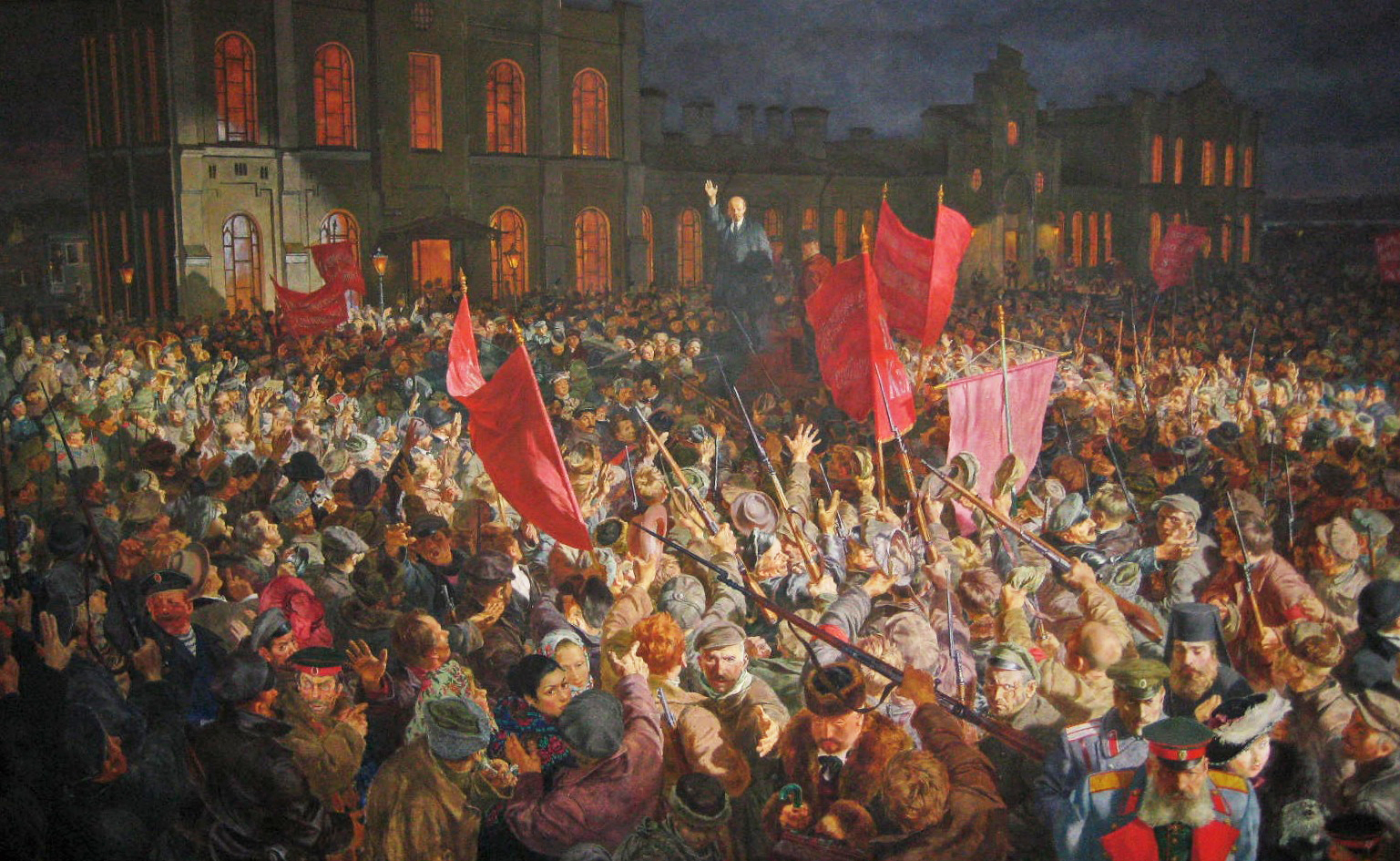The Russian Revolution at 100
We've been covering the October Revolution and its aftermath with uncharacteristic nuance.

On November 7, 1917, the first workers’ state was born out of a popular uprising.
For a long century, socialists have looked back at the October Revolution — sometimes with rose-colored glasses, sometimes to play at simplistic counterfactual. But sometimes for good reason. After all, exploitation and inequality are still alive and well amid plenty. Even knowing how their story ended, we can learn from those who dared to fight for something better.
Take a look below at our recent series on the Russian Revolution, which includes China Miéville, Alexander Rabinowitch, and others. So far entries have been translated into Chinese, Dutch, Farsi, French, German, Greek, Italian, Korean, Kurdish, Portuguese, Spanish and, of course, Russian.
We’re also offering $19.17 print subscriptions all day to mark the occasion. If you’re already a subscriber, get one for a friend. (Because this price is below costs for us, it only applies to new subs.)
The Series
Before February
The February Revolution erupted 100 years ago and swept away a blood-soaked monarchy.
by Todd Chretien
The Story of the February Revolution
Russian workers went on strike on International Women’s Day 1917. They ended up toppling tsarism.
by Kevin Murphy
From the Finland Station
Lenin arrived at Finland Station 100 years ago today, reshaping Bolshevik strategy and the course of the Russian Revolution.
by Yurii Colombo
Gramsci and the Russian Revolution
What did a young Antonio Gramsci think about the Russian Revolution?
by Alvaro Bianchi & Daniela Mussi
From February to October
In the standard account, February was the good revolution and October was the extremist one. But events in Russia were far more complex than that.
by Lars T. Lih
Finland’s Revolution
The forgotten Finnish Revolution has perhaps more lessons for us today than events in 1917 Russia.
by Eric Blanc
The Women of 1917
Women weren’t just the Russian Revolution’s spark, but the motor that drove it forward.
by Megan Trudell
The Bolsheviks and Antisemitism
Antisemitism was found across the political divide in Russia’s year of revolution.
by Brendan McGeever
Violence and Revolution in 1917
The revolutionary violence of 1917 paled in comparison to that on the fronts of the Great War.
by Mike Haynes
The July Days
The Bolsheviks wanted to avoid the Paris Commune’s fate. That’s why they didn’t take power in July 1917.
by Daniel Gaido
The 1917 Peasant Revolutions
In Russia 1917, ordinary rural people took direct action to remake their world.
by Sarah Badcock
After the February Consensus
The October Revolution was propelled by mass dissatisfaction with the erosion of February’s gains.
by Chris Read
The Kornilov Coup
One hundred years ago, why did the alliance between General Lavr Kornilov and Alexander Kerensky fall apart?
by Paul Le Blanc
From Compromise to Power
Over the course of 1917, the Petrograd Soviet transformed from a body willing to negotiate with capital to one ready for revolution.
by Kevin Murphy
The Baku Commune
The story of the Baku Commune’s leaders, who pursued power democratically and nonviolently, belies many of the myths of the Russian Revolution.
By Ronald Suny
How the Bolsheviks Won
The Bolsheviks’ rise to power, one hundred years ago today, revisited.
by Alexander Rabinowitch
The Day That Shook the World
The story of November 7, 1917 — the day the Bolsheviks changed world history.
by China Miéville
Forthcoming series authors include Suzi Weissman, Soma Marik, and Neil Davidson.